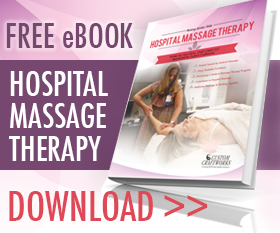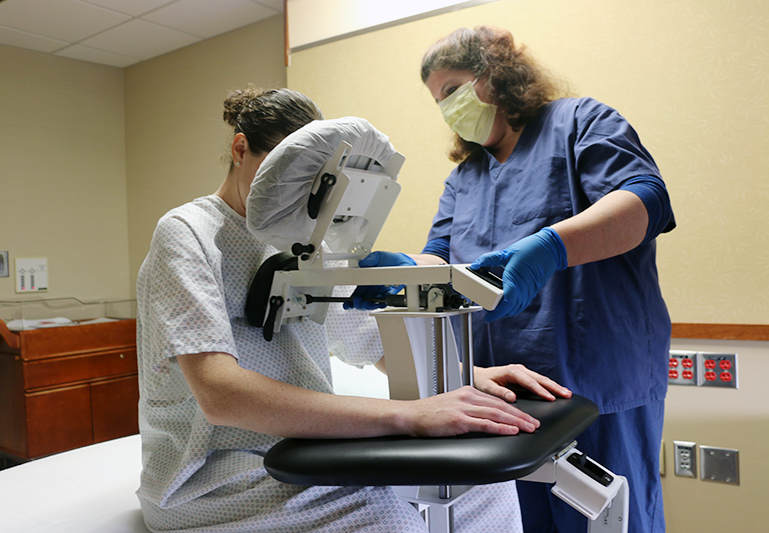As a massage therapist, I find it very rewarding to work with clients, alleviating pain from conditions previously treated by a physician. My goal is to evaluate and assess each client’s condition to see what type of bodywork will be most beneficial in improving their quality of life and decreasing their pain. Potential clients may be unaware of what a massage therapist practicing in a hospital setting can do for them, as opposed to traditional massage in a spa setting.
Working together
Informing doctors and their staffs about all the possible conditions that are treatable by massage can be challenging. Some physicians believe massage is a ‘feel good’ practice or a luxury. Others, including clients, believe there is no correlation between medical treatments and massage.
However, for some, massage is a necessity.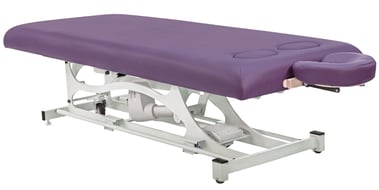
I have witnessed many health care professionals, including physicians, who are aware of medical massage and choose to refer their patients to physical therapists — since insurance typically covers it — and don’t want to ‘burden’ patients with an out-of-pocket expense.
My role as a massage therapist includes educating the medical community about the benefits and positive outcomes for patients with hospital massage. By staying up-to-date with new medical discoveries and techniques, we help promote understanding of how beneficial massage therapy and bodywork are to medicine.
Continuing education
As massage therapists, we are taught the basics of anatomy and physiology of the human body and how each system works together. Kinesiology and pathology are also important areas of expertise, as patients will come in with specific diseases or conditions that will require extensive knowledge about the human body.
Hospital massage is different from other settings and most often it requires mentoring and hands-on experience from a current practicing therapist. Working in a hospital setting also exposes the therapist to the patient’s emotional circumstances that they are undergoing like depression, acute or chronic illness and even dying.
Whether you are currently in a hospital setting, working in a spa or another practice setting, continuing your education is extremely important. Working in a hospital requires you, just like any other health care professional, to keep updated with the latest treatment modalities and innovations in medicine to determine how massage therapy can affect the patient condition for a positive outcome. It is important to take refresher courses to improve on techniques, shadow other massage therapists, take advantage of internship and externship opportunities and self-study for personal and professional growth and development.
Sanford’s commitment to hospital massage
Our Sanford Health hospital massage program began three years ago on the main floor of Sanford USD Medical Center in Sioux Falls, South Dakota. Located in the Center for Health and Well-being, we are open to patients, staff, visitors and the public.
Clients feel that having their massage therapist practice in a hospital setting builds trust that I am an expert and safety in the location with medical professionals available if needed. I provide professional knowledge and care, and working in the hospital provides the opportunity to work with physicians.
“I think the biggest benefit that I have seen with having a hospital-based therapist is that I know that the provider is utilizing good technique as well as medical massage to help with pain syndromes. I also feel that it allows a degree of collaboration in patient care. It is nice to be able to give the patient the name of a therapist through the Sanford Health facility for massage therapy to help relieve musculoskeletal pain,” says Sara Ruter, MD, internal medicine specialist at Sanford Health.
It comes as a surprise to many people how many areas of the hospital benefit from having a medical massage therapist. I have treated patients in oncology, rehab, acute care (with doctor permission), birthing center, pre-op, along with many other departments.
“Offering massage therapy services as a complement to the medical care that a patient receives was a requirement and a necessity for the patients we serve in the Sanford Center for Health and Well-being,” said Director Lynn Thomas, RN BSN. “This modality has proven to decrease stress, anxiety and pain, increase mobility, decrease blood pressure and can provide comfort to assist in the healing process for patients undergoing medical care. The on-site service also offers a benefit to the health care of employees that will improve their overall well-being in the workplace.”
Prepared for the unexpected
Since we are located in the hospital, I have had the opportunity to provide medical massage and
bodywork to patients and health care professionals alike. I once performed massage to a doctor experiencing lower back pain while he was working in the cardiac cath lab. The pain had grown so severe throughout the day that he could barely walk. I was approached to see if there was any way I could help him and I quickly fit him in so he could finish his workday. Due to a tight schedule, I had only 15 minutes to work him in. After those 15 minutes of loosening his muscles, his pain level decreased and he was able to walk standing up straight again.
Although emergency appointments don’t happen all the time, the case with the doctor is just one example of how crucial a hospital massage program is and the benefits it can provide. Just a brief session enabled him to finish his workday without pain. I am always prepared for the unexpected. I get to the hospital early to make sure my room is clean, warm and welcoming. Equipment is working properly and supplies are accessible. I also respond to emails and review client files. I thoroughly review patient files and they are encouraged to disclose medical issues, if not in their file, with me before I begin their care. 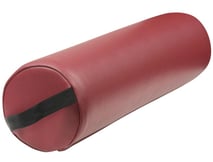
Alleviating pain across conditions
By continuing my education in various fields of massage therapy, I have been able to offer my services to many disciplines in the hospital setting. This allows me to assist clients with medical conditions, such as high blood pressure, neuropathy, rehabilitation and cancer.
High blood pressure affects many adults who have not found a medication or treatment to keep it under control. With no lifestyle changes other than regular massage every two weeks and home blood pressure monitoring, I have had multiple clients see a significant drop in their blood pressure.
I also frequently treat patients suffering from neuropathy — damage to or disease affecting nerves. I consulted with one of our physicians at the hospital with a mutual patient who was having a lot of pain. Medicine can help a patient’s pain, facilitating the return of feeling, but medication proves unsuccessful at times. After significant research and working with this physician, I discovered
how massage could benefit patients suffering from similar pain. With regular basis massage or home care massage, I have seen great results. Although pain may increase during massage, the pain
diminished later.
“Clearly there are physical benefits for massages, but there are certainly emotional benefits as well. We all know the healing process, especially for more seriously ill patients, goes beyond the physical. I think we also need to remember these patient’s families and the benefits they may gain from massage, as well,” says Patrick Kelly, MD, board-certified vascular surgeon and founder of Sanford Vascular Innovations.
Treating trauma
Having a great deal of experience and education with medical massage has allowed me to treat numerous people who have suffered different medical traumas. I recently treated a woman, Mary, who was in a severe car accident. Mary was injured, but not as severely as her husband, who was flown to our medical center in Sioux Falls. Mary remained in severe to moderate pain and was extremely stressed due to the accident and her husband’s hospitalization. I provided Mary with her first massage to help relieve the pain in her arms, neck and back as well as her stress and anxiety.
Treating stroke
In 2015 I treated Wendy, a stroke patient. Wendy remained at a standstill two weeks after her stroke. With her permission and that of her doctor, I began treating her with massage. I worked with the physical and occupational therapists during the inpatient portion of her recovery. Wendy’s muscles redeveloped strength more quickly and effectively through physical and occupational therapy and frequent massage therapy for her muscles, nerves and pain.
“The role Koni and massage therapy played in Wendy’s recovery is immeasurable. Without proper medical training, knowledge and experience of medical massage therapy, Wendy’s recovery would have been much slower and less successful,” says Wendy’s husband Vern Pierson.
I continue to provide massage therapy to Wendy and other stroke patients. Although the effects of a stroke don’t always disappear, continued massage therapy improves the healing process.
Medicine, massage and working together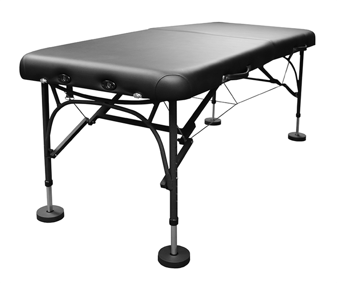
I earned more certifications knowing they would benefit not only myself, but my clients. I saw a need to become certified in lymphedema and sports massage. The more knowledge and understanding of the human body and how its systems work together, the better equipped you will be to treat your clients.
Medicine and massage complement each other by helping clients heal as a whole. I find it very rewarding to hear a client say their pain has decreased or disappeared or that tingling or numbness has improved. They are able to perform daily activities or play sports again without noticing any limitations.
Topics

Koni graduated from SD School of Massage Therapy and received her Certified Sport Training from the Institute of Somatic Therapy. She then received her lymphedema technician certification through Blue Heron Academy of Healing Arts & Sciences. Koni developed the current hospital massage program at Sanford USD Medical Center, Sioux Falls, SD.


